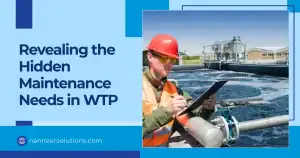Water is essential for life—but not all water is safe. Whether used for drinking, industrial processes, or agriculture, water quality must meet specific standards to ensure it is safe, clean, and usable. In this blog, we explore water quality standards, who defines them, and why they are essential for both households and industries in India.
What Are Water Quality Standards?
Water quality standards are regulatory guidelines that define the acceptable levels of physical, chemical, and biological contaminants in water. These standards help ensure water is safe for its intended use—drinking, irrigation, industrial processing, or environmental sustainability.
Key Parameters in Water Quality
Water quality is assessed based on several key parameters, including:
- pH Level – Indicates acidity or alkalinity. Ideal drinking water pH is between 6.5 and 8.5.
- Total Dissolved Solids (TDS) – Measures the concentration of dissolved substances. WHO recommends below 500 mg/L for drinking.
- Hardness (Calcium and Magnesium) – Causes scaling; acceptable limit is 200–300 mg/L.
- Turbidity – Measures the clarity of water. Ideally below 5 NTU for drinking.
- Microbiological Contaminants – Includes coliform bacteria, E. coli, viruses—should be zero in safe drinking water.
- Heavy Metals – Lead, arsenic, iron, and fluoride must be within permissible limits.
🇮🇳 Indian Standards: BIS and CPCB
In India, the Bureau of Indian Standards (BIS) and Central Pollution Control Board (CPCB) govern water quality standards:
- BIS IS 10500:2012 – For drinking water quality
- CPCB Guidelines – For industrial effluents and wastewater discharge
- MOEF Guidelines – For environmental and STP/ETP compliance
🏠 For Residential Use
Households should test for:
- TDS
- pH
- Hardness
- Microbial presence
If the levels exceed norms, water treatment plants (WTPs) like RO systems, UV filters, iron removers, and water softeners are used to bring it back to acceptable standards.
🏭 For Industrial Use
Industries must comply with:
- CPCB effluent discharge norms
- Environmental clearance for STP/ETP setups
- Regular water testing from NABL-certified labs
Non-compliance can result in fines, shutdowns, and legal issues.
Why Water Quality Standards Are Important
- ✅ Health & Safety – Prevents waterborne diseases
- ✅ Infrastructure Protection – Reduces scaling and corrosion in pipes and machines
- ✅ Environmental Compliance – Ensures safe disposal and recycling of water
- ✅ Product Quality – In industries like pharmaceuticals, food, and beverages
- ✅ Sustainability – Encourages proper reuse and conservation
📊 Water Quality Parameters—Permissible & Maximum Limits
Below is a reference table outlining the acceptable limits for key drinking water parameters in India, based on BIS guidelines:
| Parameter | Permissible Limit | Maximum Limit | Remarks |
|---|---|---|---|
| pH | 6.5 – 8.5 | No Relaxation | Indicates acidity or alkalinity |
| TDS (mg/L) | 500 | 2000 | Total dissolved solids affect taste/health |
| Total Hardness (as CaCO₃) | 200 | 600 | Caused by calcium/magnesium; causes scaling |
| Chloride (mg/L) | 250 | 1000 | Excess may affect taste & health |
| Sulphate (mg/L) | 200 | 400 | Can cause digestive issues above limits |
| Nitrate (mg/L) | 45 | No Relaxation | Harmful for infants (blue baby syndrome) |
| Iron (mg/L) | 0.3 | No Relaxation | Causes staining, metallic taste |
| Fluoride (mg/L) | 1.0 | 1.5 | Dental issues if above limit |
| Turbidity (NTU) | 1 | 5 | High turbidity affects disinfection efficiency |
| Coliform (MPN/100mL) | 0 | No Relaxation | Should be completely absent in safe water |
| E. coli (MPN/100mL) | 0 | It should be completely absent in safe water | Indicates fecal contamination |
💡 Note: “No relaxation” means the parameter is critical and exceeding it makes the water unfit for use.
How Nanneer Solutions Helps
We offer water quality testing support and custom-built treatment systems for:
- Apartments, villas, and housing societies
- Schools, hospitals, hotels
- Factories, IT parks, and large-scale industries
From iron remover filters to RO plants and STPs, our systems are designed to meet BIS, WHO, and CPCB standards.
Need Help with Testing or Treatment?
Nanneer Solutions can help you check your water quality and suggest the right system.
📲 Call us at +91 99626 63738 or Get a Free Quote





